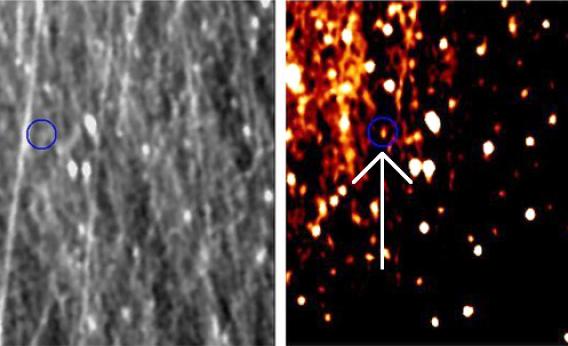Create a free profile to get unlimited access to exclusive videos, sweepstakes, and more!
Pluto by Cometlight

While we wait for the signal from New Horizons telling us all is well, I can’t resist showing you what may be the second most unique photo of Pluto I’ve ever seen. One taken by the Rosetta probe still orbiting the comet 67P/Churyumov-Gerasimenko:
The left panel is the raw, unprocessed view, taken on Sunday, shortly before New Horizons’ closest approach. The right panel shows Pluto in the blue circle (I added the arrow to make it clear).
And all that wispy, tendrilly stuff in the photo? That’s ice and dust from the comet blowing away into space. In this photo we’re seeing Pluto through the billowing atmosphere of the comet itself, through an interplanetary snowstorm!
How’s that for poetic?
Getting this image wasn’t easy; the cameras were not designed to take deep space photos. It took more than three hours of exposure and a lot of processing to tease those few photons into showing themselves. Pretty amazing.
Right now, the comet 67P is on the inward leg of its elliptical path of its orbit around the Sun, and will reach perihelion (closest approach to the Sun) in August. As the comet nears, its activity increases; ice on and under the surface turns into a gas and jets out and away due to the extremely low gravity. That’s why there’s so much junk in the Pluto photo.
A similar process is occurring on Pluto itself. The northern hemisphere is nearly at summer solstice, and is warming. Nitrogen ice, frozen at the north pole for decades, will begin to sublimate and redistribute itself over different parts of the icy world. Imagine! New Horizons is barreling past Pluto at 14 kilometers per second, 50,000 kph, and will never return. But if we sent another probe to get there in, say, 20 years, the Pluto it sees will look different. Perhaps not a lot, but enough to tell it’s active.
The worlds of our solar system have but one thing in common: change. It’s a very good reason to continue to seek them out and observe them. The view we get will never be the same twice.














